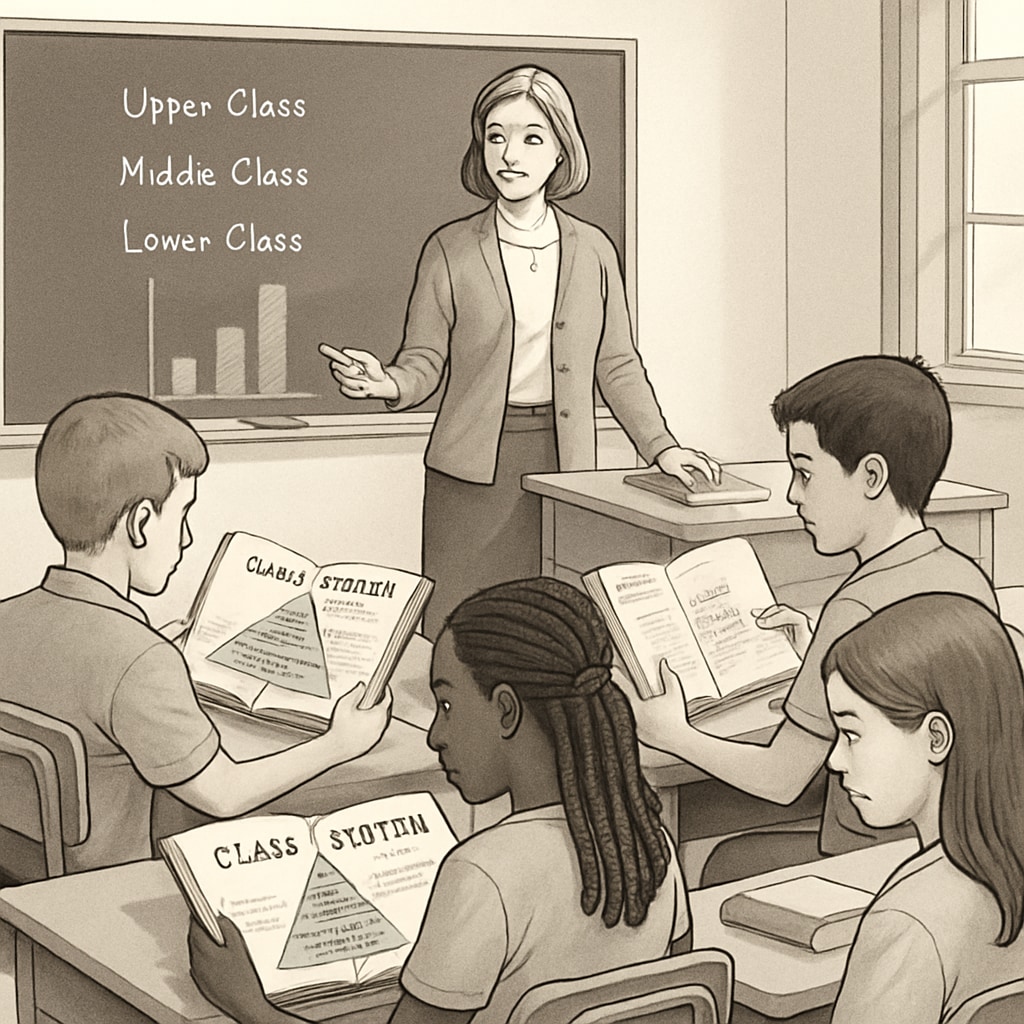The debate around social mobility in education has gained traction due to a controversial description in a sixth-grade social studies textbook. The textbook allegedly describes social class as a nearly immutable structure, implying that upward mobility is rare or impossible within a society. Such narratives, embedded in educational content, can profoundly influence how young minds perceive the world. This raises critical questions about the role of education in shaping students’ understanding of societal dynamics and their own potential.
How Social Class is Portrayed in Educational Materials
Educational materials often aim to provide students with foundational knowledge about societal structures, including the class system. However, when these materials adopt a rigid or deterministic view of social mobility, the consequences can be troubling. For example, the analyzed textbook describes social classes as largely fixed, discouraging notions of progress or personal agency. This perspective contradicts historical and contemporary evidence showcasing individuals and groups overcoming barriers to achieve upward mobility.

Such descriptions risk creating a defeatist mindset among students, particularly those from disadvantaged backgrounds. Instead of inspiring change, they may reinforce stereotypes and limit aspirations. According to the American Psychological Association, fostering belief in personal agency can significantly improve academic and life outcomes. A curriculum that undermines this could inadvertently perpetuate inequality.
The Impact of Dangerous Narratives on Student Worldviews
When students are exposed to rigid narratives about the class system, their worldview may become skewed. For instance, they might internalize the idea that success is unattainable for those born into lower socioeconomic statuses. This could lead to decreased motivation, lack of engagement in school activities, and a diminished sense of self-worth.
Furthermore, such narratives may affect how students perceive others. It could foster prejudice or resignation, undermining the values of empathy and community. Researchers from Stanford University emphasize the importance of teaching social mobility as a dynamic concept, one that acknowledges challenges but also highlights pathways to overcome them. This balanced approach can empower students to become agents of change within their own lives and communities.

What Can Parents and Educators Do?
Parents and educators play a crucial role in ensuring that educational content provides a balanced view of societal structures. Here are actionable steps to address the issue:
- Review Textbooks: Regularly review social studies textbooks and supplementary materials to identify potentially harmful narratives.
- Encourage Critical Thinking: Facilitate discussions that challenge simplistic or deterministic views of the class system. Encourage students to explore historical examples of social mobility.
- Advocate for Curriculum Reform: Work with school boards and policymakers to integrate content that reflects the complexities of social mobility.
- Supplement Learning: Provide external resources, such as biographies of individuals who achieved social mobility, to inspire students.
By taking these steps, parents and educators can counteract the negative effects of rigid narratives and foster a more hopeful and realistic understanding of societal dynamics.
Conclusion: The Need for Balanced Education
Educational content has the power to shape young minds, influencing their perceptions of themselves and the world around them. The portrayal of social class rigidity in a sixth-grade social studies textbook serves as a reminder of the importance of critically evaluating what we teach our children. Balanced, evidence-based narratives can inspire hope, resilience, and a commitment to positive change. It is up to parents, educators, and policymakers to ensure that education fulfills its role as a catalyst for progress, rather than a barrier to it.
For more information on social mobility and its impact on education, explore resources like Social Mobility on Wikipedia or Social Class on Britannica.
Readability guidance: This article uses short paragraphs, lists, and transitions to enhance clarity. Passive voice is minimized, and long sentences are limited to ensure accessibility for a broad audience.


